‘Goosebumps’ Turns 30: R.L. Stine Reflects on Writing Series, Scaring Generations of Young Readers
- Oops!Something went wrong.Please try again later.
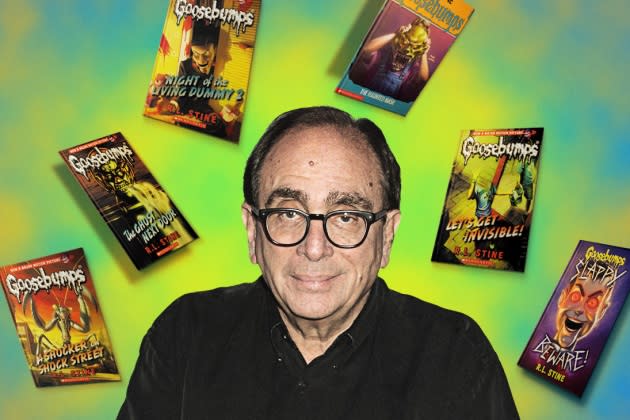
A haunted mask, a sea monster, an abominable snowman, ghost dogs and a living ventriloquist dummy are just a few of the famous fears featured in R.L. Stine’s long-running Goosebumps series. For 30 years, Stine has been scaring generations of kids with his monthly Scholastic book series, first introduced in 1992 with Goosebumps: Welcome to the Dead House.
The original series, which has since spawned spinoffs, series adaptations, two feature films, video games and more, has sold more than 350 million English language books in print, plus over 50 million international copies in print in 24 languages. By the mid-1990s, the books were selling at a rate of 4 million per month, earning recognition as the world’s best-selling book series of all time in the 2003 Guinness Book of World Records.
More from The Hollywood Reporter
Colton Haynes Discusses Lengths He Took To Stay in Closet on 'Teen Wolf' and 'Arrow'
Carter Bays on How the End of 'How I Met Your Mother' Led to Debut Novel 'The Mutual Friend'
Despite becoming a pop culture publishing phenomenon, Stine admits that he originally had little interest in writing the popular series. “I didn’t want to mess up the Fear Street audience by doing a younger series. And my editors, kept after me and said, ‘no one’s ever done a series for seven to 12-year-olds of scary books. Let’s try it. Let’s try it.’ Then I finally said, ‘alright, we’ll try two or three,'” he tells The Hollywood Reporter.
It also wasn’t a hit right off the bat. “We put out the first three or four [books] and no one bought [them],” Stine explains. “No one discovered them at all for months.” But the series eventually caught young fans’ attention, with Stine crediting the “secret kids network” of Goosebumps readers for its success.
But even as Stine’s signature formula of horror and humor appealed to a growing community of young readers, the author recalls the books were less liked by some parents. At the time, that initial response from adults left him sure there would be “a lot more protests” thanks to the covers, which “were so much more garish and scary than the stories.”
“A lot of parents were upset,” he recalled. “They were trying to get Goosebumps out of school libraries.”
A Columbus native, Stine describes himself as a once fearful child, convinced something was lurking in the shadows. But for three decades, he’s channeled that fear into the experiences of his young protagonists confronting varied scary encounters. Still, there’s one fear Stine will never tackle: the real world.
“Any real-life fears — fear of your parents breaking up, fear of being kidnapped — I would never do anything like that,” he tells THR, noting it’s already a “scary world for kids.”
To commemorate Goosebumps‘ 30th anniversary this month, Stine speaks to THR about the successful series, the one rule he has when writing, what shocked him from an adaptation and even shares his most and least favorite books.
How does it feel for it to now have been 30 years but the books are just as, if not, more popular than ever? Does it feel like it’s been 30 years?
It feels like 80 [years]! That’s a lot of books — 30 years worth of books. That’s why I look like this. (Laughs.) I’m kind of amazed by the whole thing. It’s like maybe I’ve lost track of how many books it is. I think maybe 150? I don’t know.
I read you first started writing when you were 9 years old. Did you ever have an idea of what you would want to pursue in writing? Did you ever envision writing novels?
No, it was funny. I did joke books and little comic books. I never planned to be scary or anything. I always wanted to be funny. I would do funny stuff, typing in my room. I was this weird kid. I had no idea why I liked it so much. Why did I think it was so interesting? Here I am still doing it! I wrote a hundred joke books for kids. I did a humor magazine called Bananas for 10 years for kids. I just never planned to be scary.
You were writing the young adult series Fear Street before Goosebumps. So what ultimately jumpstarted that transition?
We started Fear Street [and] I was killing off teenagers every month. People like to see teenagers get killed. I don’t know why! The Fear Street movies last summer on Netflix? We killed maybe 50 teenagers and somebody wrote to me and said, “Not gory enough.” That’s sick!
Goosebumps, this is embarrassing, but I didn’t want to do it. It wasn’t my idea. I didn’t want to mess up the Fear Street audience by doing a younger series. My editors kept after me and said, “No one’s ever done a series for seven to 12-year-olds of scary books. Let’s try it. Let’s try it.” I finally said, “Alright, we’ll try two or three.” Shows what kind of businessman I am.
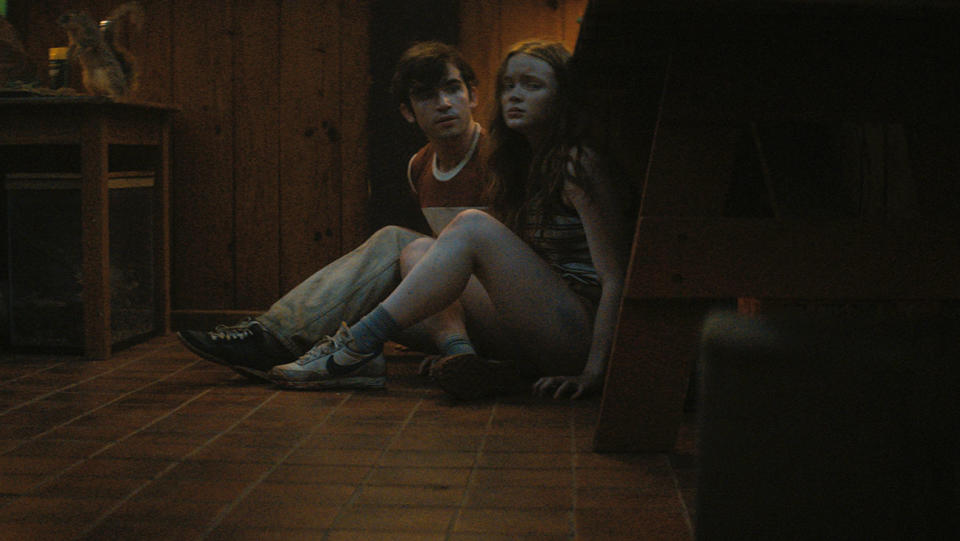
Courtesy of Netflix
You said you would first try writing two or three books. Was that the original goal when it came to Goosebumps?
No [it was a] “let’s see what happens.” The truth is they sat on the shelf. We put out the first three or four [books] actually and no one bought [them], they didn’t go. No one discovered them at all for months and today with computers and everything, the bookstores would’ve just pulled them off the shelf. Never would’ve happened. These kids discovered it in the bookstores and brought them to school and showed them to their friends. That’s how Goosebumps got going. It’s a secret kids network. I think all the crazes for kids’ books start that way. Harry Potter or The Hunger Games or Twilight, I think it’s all just word of mouth between kids.
When first writing these, what was the reaction from parents and how did that change over time?
Well, I thought there would be a lot more protests than there were. I thought people would be very reluctant, but partly because the covers were so much more garish and scary than the stories. A lot of kids told me they had to turn the book upside down at night so they couldn’t see the covers. But the teachers and librarians were very supportive right from the beginning because they saw kids were reading them. Some librarian wrote to me and said, “You’re keeping us in business.” So they didn’t care what was in the books. A lot of parents were upset. They were trying to get Goosebumps out of school libraries. That happened quite a bit in the early days before people really knew what it was. But a lot less than I thought.
What was your reaction to those trying to get your books out of school libraries?
I always said, “Kids read ’em at home.” I don’t really want them reading it at school. I really don’t like it when teachers turn Goosebumps into school work and they have to write out book reports. I like it if they’re just reading it for fun. They’re reading under the covers with a flashlight at night.
I’ve read that you come up with the title of the book first and also do a complete, chapter-by-chapter outline of every book before writing. Has that been the writing process for every book?
Every book. Everyone hates to outline but I can’t work without it. People say, “Where do you get your ideas?” My least favorite question, but I don’t try to think of ideas anymore. I think of titles cause I’ve done every idea. (Laughs.) So I try to think of a good title for a book, like Fifth Grade Zombies, and then the title will lead me to the story. Then I try to figure out the basic premise. I always try to come up with the ending first because then I know how to keep the readers from guessing the ending. I know how to fool them and how to keep them away. I do maybe a 20-page outline for every Goosebumps book. Kids think you sit down and write a book but I’ve never done that in my life. I spend maybe a week on the outline and then when I sit down to write the book, I know everything that’s going to happen in the book. I’ve done the hard part. I’ve done all the thinking and I can just relax and enjoy the writing.
Has a story ever strayed from your outline before?
Oh yeah. I’m working on a Goosebumps book for next year called Fright Night. It’s [about] a town where every school has a monster living in the basement. I’m in the middle of this book right now and the outline was maybe half too short. So I’m having to add a lot. I have a lot of padding in this one.
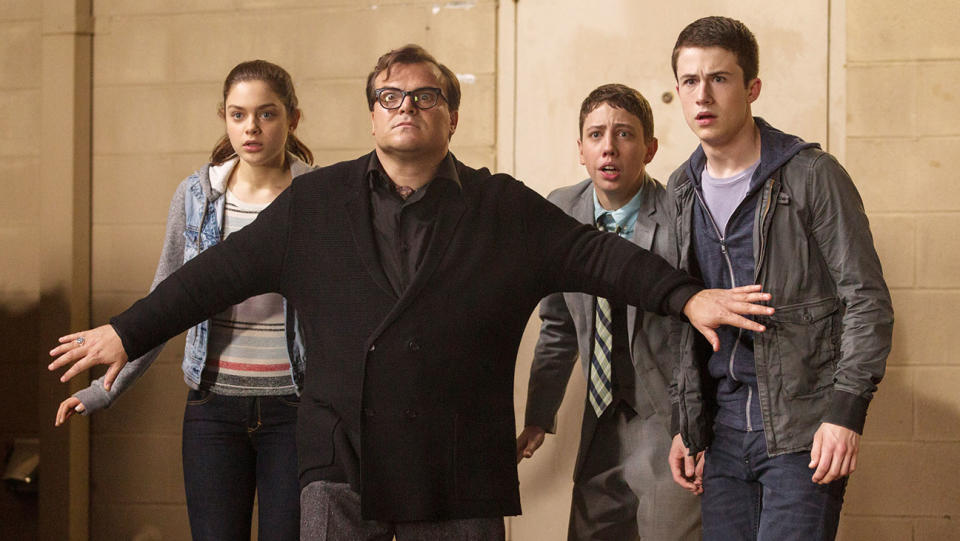
Columbia Pictures/courtesy Everett Collection
These books aren’t necessarily lengthy books, do you find that makes it easier when trying to outline the story or has it ever been challenging trying to craft a story in a shorter window?
No, I love it when they’re short. The first books were like 50,000 words. It took forever. I can’t spend a month on a book. How can I spend a month on a book? I have a new book series coming out this summer of short stories, even shorter. It’s a book of 10 new, scary, short stories. It’s called Stinetinglers.
I love that title.
I think they bought it for the title.
I know you said you don’t like to be asked where get your ideas from but I was still curious about how you create the sense of fear in your books. Are you pulling from personal fears you had growing up or fears that children may normally be scared of?
I think all. I was a very fearful child. I was very shy. I think that’s one reason I stayed in my room writing all the time. I grew up in Columbus, Ohio, and I’d ride my bike and then at night, I was sure something was lurking in the garage. I knew something was waiting and I just heaved my bike into the garage and run into the house every night. But when I started writing this stuff, I could draw on that. I could remember that feeling of being a kid and being in a panic. It helped me a lot.
What, if any, boundaries do you set when writing these stories? What is the limit with how far you’ll go with the scares?
I have one rule for Goosebumps and that is the kids have to know that it couldn’t happen. They have to know that it’s a fantasy. If I establish that and the plot is so absurd — it [can] never happen in any lifetime — then I can go pretty far with the scares. It’s a scary world for kids and I try to keep out a lot of real-life things that might happen to a kid that might be bad and make it pure fantasy. Now when you write for teenagers or adults, you have to do the exact opposite. Every detail has to be believable or they’re not gonna buy it.
While writing these books, apart from entertaining readers, is there anything you’re ever hoping gets across?
No. It’s total entertainment. People always say, “What lessons are you teaching?” I say “Just run!” (Laughs.) Adults are allowed to read things with no redeeming value, right? There was always a rule in children’s publishing that your protagonist has to learn and grow. And I thought, why? Why do they have to learn and grow? Why can’t they just have something that’s just fun? That’s what I try to do. I don’t try to teach anything. I don’t try to raise their vocabulary level. They lose a few IQ points. (Laughs.)
And perhaps have some therapy sessions about the scares from your books.
I still get mail from kids saying, “I can’t wear a mask for Halloween time” or “I’m terrified of puppets and dummies.” I did all those Babysitter books for teenagers and kids would write to me and say, “I’m never babysitting again. My life is ruined!”
In an interview, you mentioned the one time you gave a book an unhappy ending you received mail from kids expressing how they hated it. Was that reaction surprising to you?
Oh yeah, and I did it just for fun, for me. Every book has a happy ending. I thought what would happen if I didn’t [write one]? It was [a Fear Street book] called The Best Friend and the good girl gets taken away as a murderer and the murderer gets off scot-free and kids hated this book! It haunted me. They mail immediately, “Dear R.L. Stine, you moron. How could you write that? You idiot. Are you going to write a sequel to finish the story?” They couldn’t accept it. I would do school visits, [and] some kid [would say], “Why did you write that book?” It followed me everywhere. So I actually wrote a sequel to give it a happy ending. (Laughs.) I never did it again.
How do you find that balance of writing things that creatively fulfill you while also still appealing to readers who have already been a fan as well as new fans of your books?
I think I’m easily satisfied. It doesn’t creatively fulfill me. (Laughs.) You know, all these authors who come to schools and assemblies and they say, “Write what you know kids. Write from the heart.” I’ve never written a single word from my heart. I wrote to entertain these kids. “Write from the heart.” What does that mean? I don’t know!
Despite your books falling in the young reader genre, what is it like to now have fans that are adults? Is it odd to think you offer a sense of nostalgia?
It took me a while to get used to it. When 30-year-olds would come to my book signings, I’d always say, “What are you doing here? Why are you here?” [They’d say] “We loved you when we were a kid.” It took a while, but hey, how lucky is that? I get to scare a lot of generations. I just think that’s the luckiest thing, isn’t it? Who’s luckier than me really?
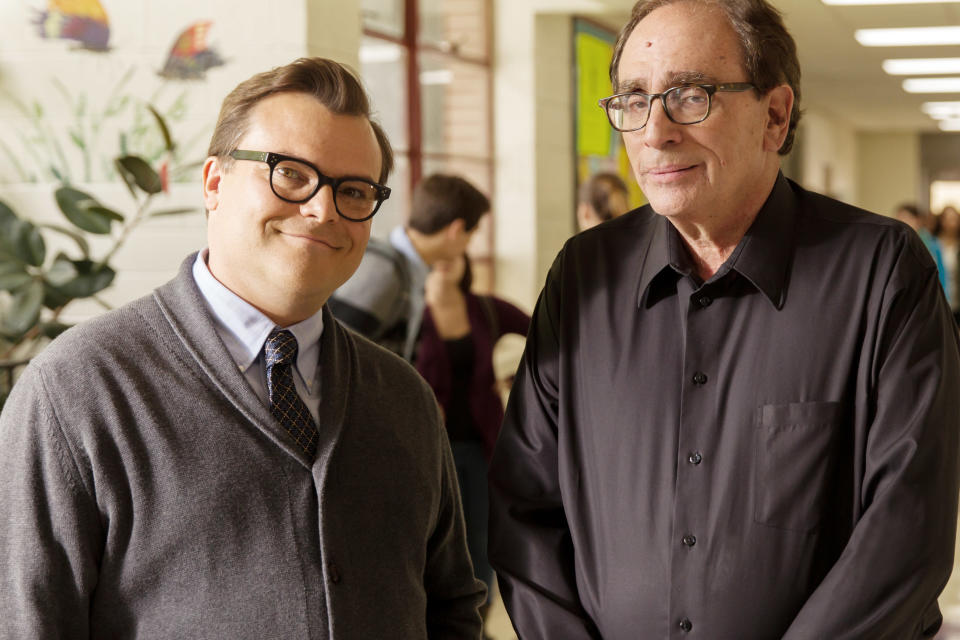
Columbia Pictures/courtesy Everett Collection
What has been the difference in reader responses, if any, from the previous generation? Any surprising responses?
In response, no, I don’t think so. Technology changes but all the fears stayed the same. I honestly think Goosebumps could have been written when I was a kid. It’s all the same… afraid of the dark, afraid something’s under the bed [or] afraid of getting lost. None of that ever changes.
There is a myriad of Goosebumps books. When looking back, do you have any personal favorites? Are there any that weren’t your favorites?
There’s some bad ones. Not all can be great. I looked at Go Eat Worms! recently and I was like, “That’s a horrible book.” It’s just not good at all. There was another one that had a great evil dog on the cover called The Barking Ghost. That’s a horrible book. I think my best Halloween story is The Haunted Mask. That was the first TV show we did. It’s the only Goosebumps book inspired by something in real life. When my son, Matt, was real little, it was Halloween time and he was trying on a green, rubber Frankenstein mask in the living room. I’m watching him from the doorway and he pulled the mask down over his face and he couldn’t get it off. I’m watching him — he’s tugging and tugging. I thought, “What a great idea for a story!” I should have helped him, right? (Laughs.) I started making notes.
Then you did in fact write what you know at one time.
(Laughs.) One time!
It was announced that Disney+ has picked up a Goosebumps live-action series. Can you tease anything about it?
I wish I knew something about it. I’m not in the loop. (Laughs.) It looked to me like they weren’t going to do an anthology show. They were going to do something different that was some kind of continuing story. That’s what it appeared. But I have no information about it.
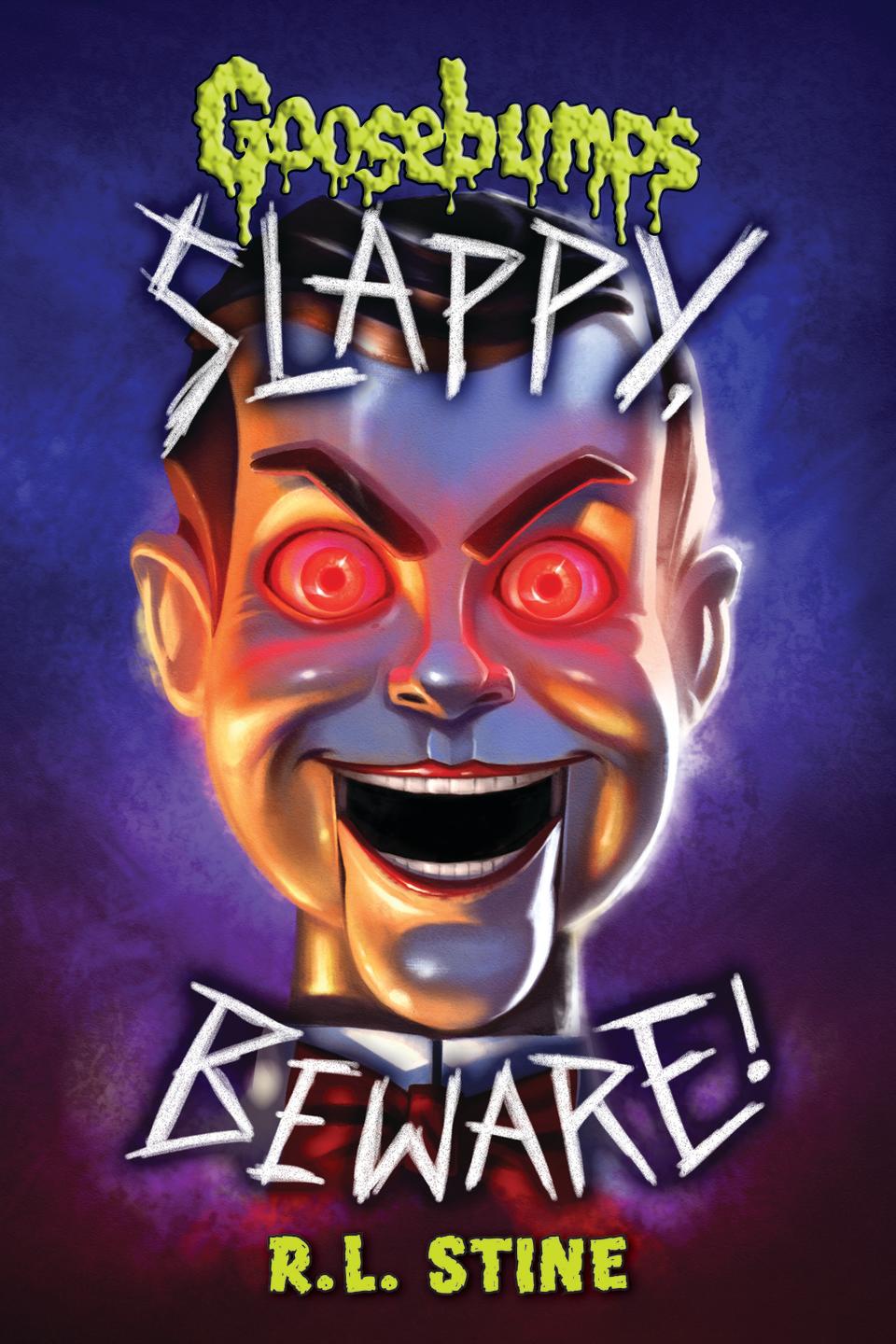
Scholastic
When looking back at the Goosebumps adaptations, are you able to watch it as a viewer or do you find yourself critiquing and analyzing them given they’re based on your work?
No, I’ve been so lucky. The two Goosebumps movies were actually good! And the TV series that I’ve had — The Haunting Hour, [Disney+ series] Just Beyond and the Goosebumps [television] series — they were all really good quality series. I’ve been very lucky with that stuff because I don’t get that much input on these things.
Was there anything from the adaptations that were different that you perhaps didn’t include in the original story that you enjoyed?
I have to say I was shocked by the Fear Street movies. They were R-rated. I’ve never had anything R-rated. My life isn’t R-rated. (Laughs.) So I was kind of shocked by that all the slashing and teenagers being cut to pieces.
The TV adaptations that they did back in the ’90s, it was fun for me to see. I was busy writing a book a month and so I couldn’t really have much to do with the TV show. So it was fun to see what other writers would do, taking my story and then making it their own and going in different directions.
As generations continue to be introduced to these books, what do you hope the Goosebumps legacy will be? Have you taken away anything personally from your time writing these books?
What’s most satisfying to me is the millions of kids who learned to read from Goosebumps and who learned to really enjoy reading. Now on Twitter and everywhere I hear people saying, “I wouldn’t be a librarian today if it wasn’t for your books.” It’s so gratifying. [I hear things like] “I wouldn’t be a writer today. I just had my first book published thanks to you” or “Thanks for getting me through a difficult childhood.” That’s the most satisfying thing. You never get tired of hearing that.
Interview edited for length and clarity.

